Principal’s Message Continued...
Below are some strategies for new families:
When you’re leaving your baby or child
By Chrsitine Irwin
• Start with short separations from your baby or child. You can gradually increase the time apart as your child becomes comfortable with separation.
• Tell your child when you’re leaving and when you’ll be back. This is helpful even with babies. Leaving without saying goodbye can make things worse. Your baby or child might feel confused or upset when they realise you’re not around. They might be fearful and harder to settle the next time you leave them.
• Settle your child in an enjoyable activity before you leave.
• Say goodbye to your child briefly don’t drag it out.
• Keep a relaxed and happy look on your face when you’re leaving. If you seem worried or sad, your child might think the place isn’t safe and can get upset too.
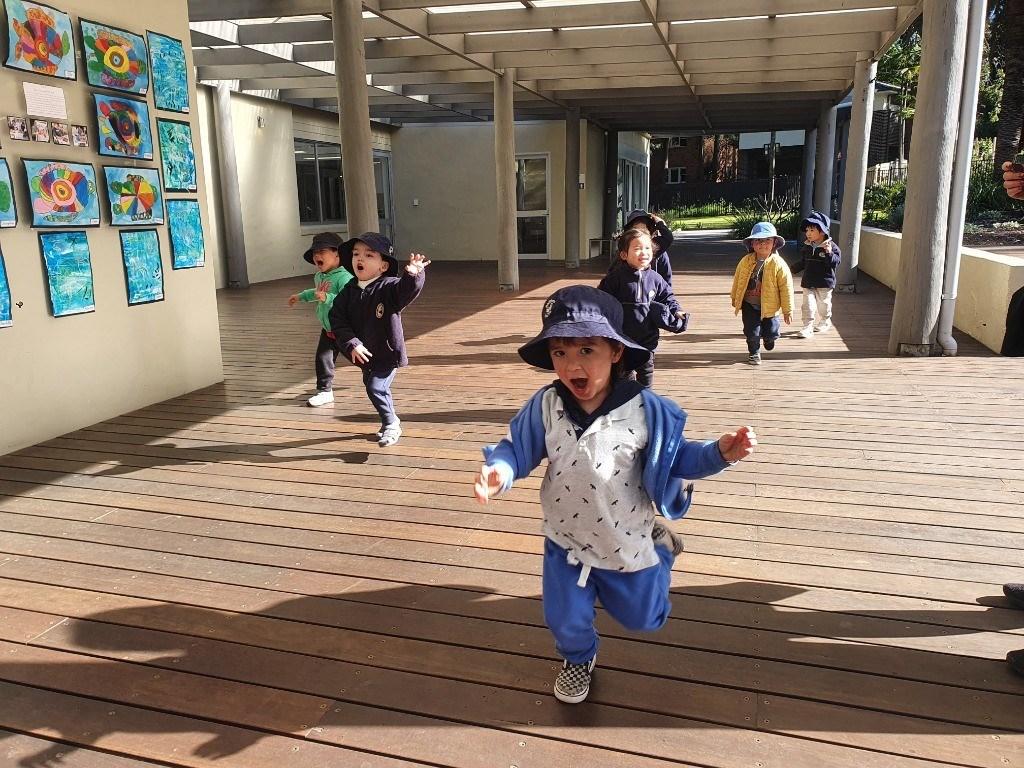
Raising Children the Australian parenting website https://raisingchildren.net.au/
When you are at home with your child before and after being at the service
• Talk positively about the school and use the educator’s names.
• Avoid criticising the child for example “You are such a mummy’s girl”
• Remind the older child that you will be returning to care and if they would like to take something with them to show the educators and the other children from home. This can also be a comfort for them to hold throughout the day.
• Read stories about going to school/childcare or makeup stories about the process
2
A reminder that class photos will be taken in October. The group photos will be added to your child’s portfolio which will be given to you at the end of the year. We ask that stage 3, and 4 children wear their school multiform on class photo days. No individual photos will be taken. No payment is required We will be taking photos of all classes each day to be sure to capture every child who attends the school. Photos will be taken in the morning Class photos dates are as follows:
Tuesday 25th October 2022 Wednesday
Thursday
2023 enrolments
An email has been sent regarding 2023 enrolments. Please communicate any changes in days that you require for 2023 by 28th October 2022. After this date new families will be offered positions so, please communicate with Chenise ASAP
Looking forward to chatting with you soon, Christine Irwin Principal

26th October 2022
27th October 2022
2
By Heather Gaskall
Hello our beautiful families and welcome to Term 4 our final term for the year, goodness how time flies when you are having fun. This old saying is so true, we have all had a brilliant year and our gorgeous little babies have grown and matured so much over the year. Our little ones are vastly different from their first days of drop offs when there were plenty of tears. Now they happily walk in the door eagerly looking for what awaits them. This term we are following the children's interest in animals, they all have shown such fascination when we have had the animal figurines out for them to explore. So we are going to follow that and give them the opportunity to take this exploration a step further and introduce some further knowledge along with the fun.
We have started our look into the Wide World of Animals with Dinosaurs and Extinct Animals as the children’s interest is always peaked when Dinosaur’s are around. The children have engaged in various sensory play activities such as small dinosaur world play where there were dinosaur figurines, sand and a cup filled with baking soda. This represented an imaginary scene in the of dinosaurs living around an active volcano. The children were offered a dropper and a glass of vinegar to experiment the chemical reaction between baking soda and vinegar. It also provided an opportunity for them to practise their fine motor skills as well as experiment the concept of cause and effect. Another of our sensory activities continued to allow the children to have adventures in the dinosaur world, and use their imagination to explore ideas related to dinosaurs that lived on this earth millions of years ago. The children were enticed to explore the sensory table of sand, rocks, blue stones and water. They were able to use the small shovels and dig in the sand to uncover the hidden dinosaurs just like an archaeologist would. We also gave the children the opportunity to rescue some dinosaurs from a frozen scene, our little ones just adore finding hidden treasures.

Miss Jenny created some dinosaur flash cards to help the children learn interesting facts about, and perhaps help us to know all the names of the dinosaurs, lol. Some of the information on the cards was very interesting like the Ankylosaurs had armoured plates and moved very slowly, and the Stegosaurus used its back plates to make itself look bigger to other dinosaurs. To follow on with all this learning we then placed dinosaur footprints around the classroom and encouraged the children to stomp along with the teachers pretending to be dinosaurs. We all stomped and roared around while listening to the song ‘walk the dinosaur’.
We also talked about the various causes of extinction and how humans are not the only ones to bring on extinction of a species. There are many causes such as lack of food, lack of genetic diversity, invasive species, climate change, disease, pollution, asteroid strike, loss of habitat and better adapted competition. Some of the extinct animals we talked about were the 7 foot Moa (flightless bird) from New Zealand and of course the one everyone knows, the Dodo Birds.
Next week we are going to have an adventure under the sea and investigate what lives in the oceans.
Wishing all our families a wonderful weekend Heather, Doris, Jenny, Jaycel & Ona
Stage 1R
3
‘It's very simple why kids are crazy about dinosaurs -- dinosaurs are nature's Special Effects.’ Robert T Bakker



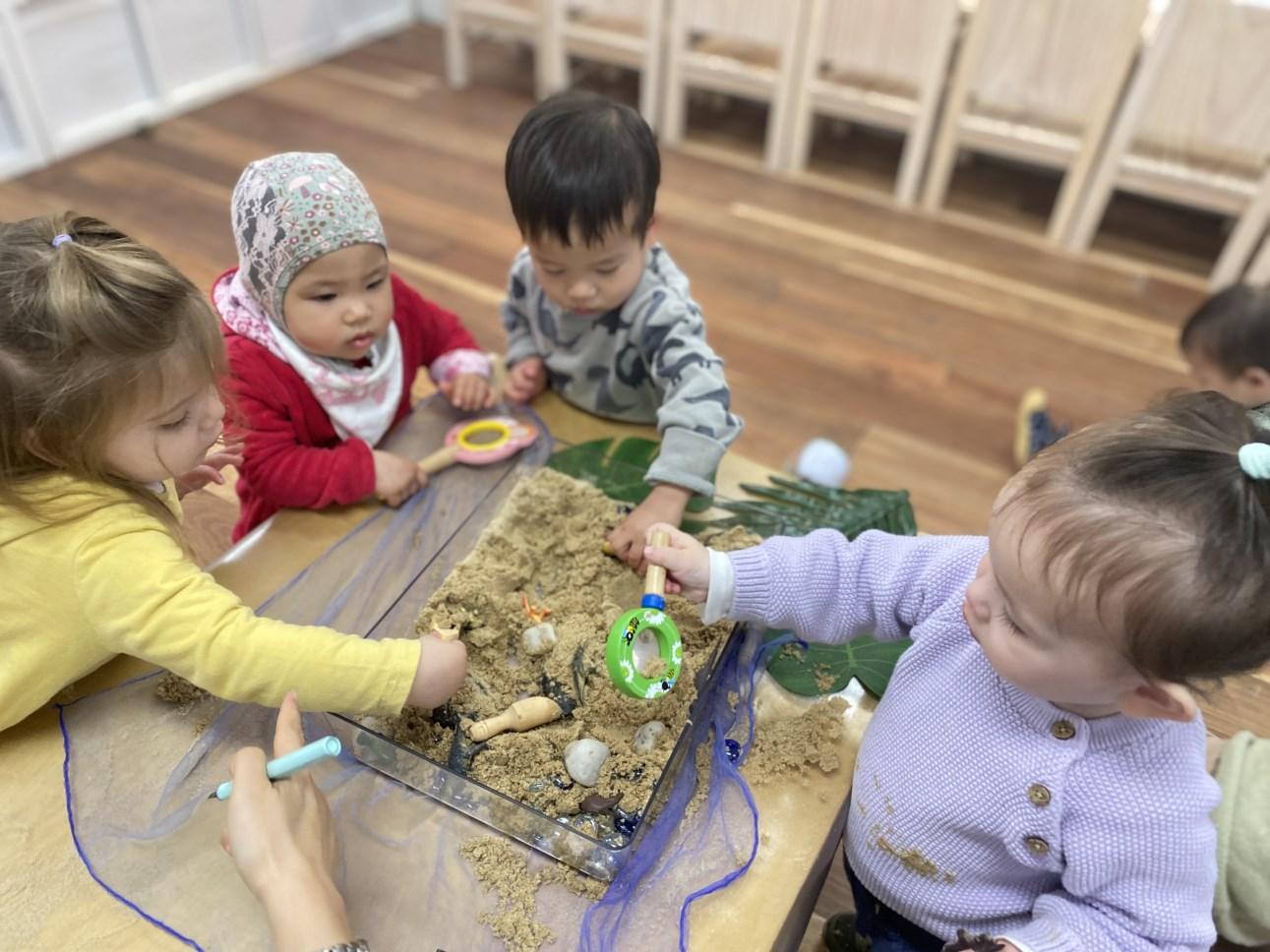





4 Stage 1R:
By Charity Acera
Welcome back to Term 4, 1E families! It was such a successful term three of this school year with your adorable children and the Stage 1E team are very grateful for your continuous support, understanding and cooperation with regards to adhering to our protocols and most importantly providing positive early learning experiences to our young learners. Hence, we continue to provide quality learning and care for Term 4 as it will be about promoting children's 'Sense of Becoming' by focusing on topics that will build important milestones of a toddler. According to EYLF, "Becoming emphasises learning to participate fully and actively in society". To experience change through different events and circumstances in one’s life. A child’s sense of becoming refers to the changes they experience as they grow, learn and develop. Within early childhood, a child’s sense of being changes over time as they gain knowledge, extend their understanding, create relationships and develop skills. This enables a child to learn to participate actively in today’s society.
Promoting confidence, we use simple pictures as a great tool for children that don’t have words but still need to express how they feel. This was demonstrated through a mirror activity and as well as through visual aids wherein the children were allowed to play with mirrors and reflect on their emotions against the pictures on the wall. They were encouraged to increase their vocabulary bank as they identified and recognised facial features through pointing and verbalising such features. This activity was also a great way to match emotions against the wooden socio emotional wooden human figures. Mirrors are a great way to practice what these feelings look and sound like using their own faces, bodies, and voices. This activity can also be an opportunity to practice emotional vocabulary.
Art is one of the best ways to develop the social and emotional development of these eager learners. During this age, children mostly express their emotions through sensory learning experiences such as making crafts and painting. This week's creative activity invited the children to use mirrors and painting brushes. This encouraged them to practice their muscle control and fine motor skills. When we encourage our children to explore art, we encourage them to master themselves, their bodies, and a variety of tools and techniques. We give them many ways to express themselves.
We noticed how engaged the children were in their solitary play as well as cooperative play with their peers, we already observed beautiful collaborative plays as well which just indicates confidence in themselves and a sense of ownership in participating in the activities that they are keen on. They were amazing at sharing the play space as well as demonstrating interdependence and autonomy within their learning journey.
Next week’s focus will be on learning about provocation will promote children’s verbal and non their communication and social interactions.
Thank you for spending your time reading our newsletter! Wishing you a lovely weekend ahead! Charity, May,Rowel, Resie, Mary and Yash

Stage 1E
6
“It is not about smart children, it is about happy children who have the confidence to learn and pursue things dear to their heart. ” (Alexandra Eidens)

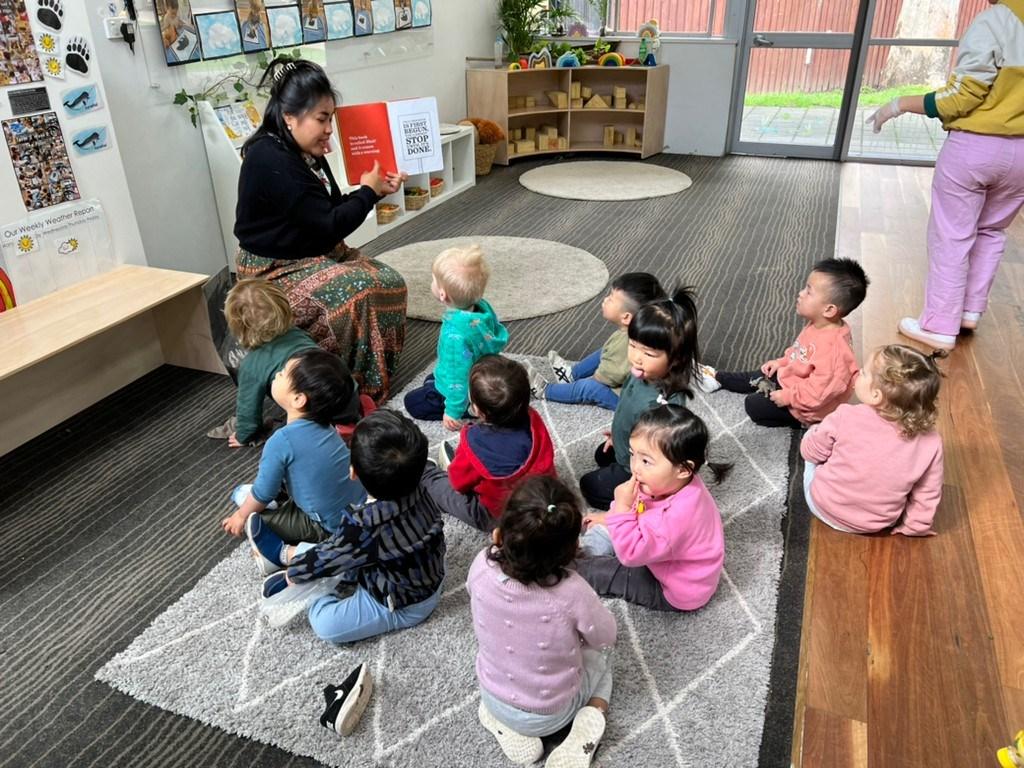







7 Stage 1E:
By Sara Haddadi
This week we started our journey around the world by learning more about our beautiful country Australia and its culture. Cultural Diversity enriches children's learning by exposing them to various values, beliefs and differences. We can start educating children to accept, respect and embrace these differences early.
The book of the week was titled ‘I'm Australian Too’ by Mem Fox. This book goes through many different origins of Australian children who validly feel like this is their country. This story celebrates the vibrant multiculturalism that has shaped Australia. The book touches on Indigenous Australians as well as the experiences of immigrants and refugees, and it champions the idea that the ‘Australian’ identity is incredibly diverse and welcoming. Another book children adored was titled ‘Patterns of Australia’ by Bronwyn Bancroft, representing a series of Australian landscapes and habitats in “patterns”. This book allowed the children to see the Australian environment in a new way, as they discovered that there is so much more to see around us if we only look!
We developed our knowledge of Australian native animals, spiders and sea creatures during the small world play experiences. Habitats were created for all these fascinating living creatures using natural materials. Children engaged their creativity by creating new habitats for them. The ability to be creative is vital to the success of children and the well being of our world. All these imaginative experiences helped the 2R children with storytelling, expanding their vocabulary, learning about different habitats and discovering the animals that live in Australia.
As we have a responsibility to value and promote a greater understanding of Aboriginal ways of knowing and being, we introduced Aboriginal Symbols to our little ones in a play based way. Children were offered a variety of experiences to learn more about the Aboriginal rich culture and way of living. Art of the week involved children creating the Aboriginal dot paintings.

Food is often used as a means of retaining cultural identity. So this week, the children were encouraged to be engaged in some cooking activities to create a stronger connection with Australian culture. 2R made ANZAC Biscuits, a traditional Australian biscuit, and Australian Damper. Hopefully, this week we showed our respect for diversity by celebrating the differences and taking the step to strengthen children’s self
a restful weekend, everyone!
Team
Stage 2R
9
“Keep your eyes on the sun, and you will not see the shadows.” (Australian Aboriginal Saying)
Have
2R

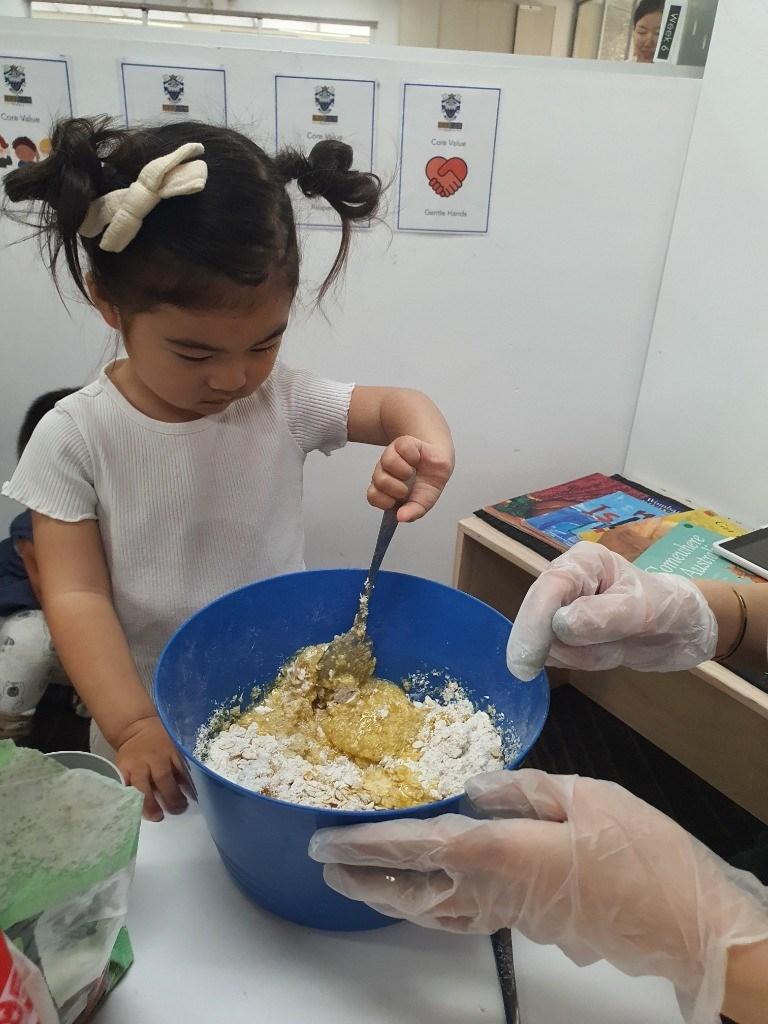







10 Stage 2R:
By Mia Doan
“When we can talk about our feelings, they become less overwhelming, less upsetting, and less scary.” (Fred Rogers)
Welcome to the last term of 2022! Continuing on this year's learning journey, the 2E children have shown a great ability to build up their confidence and identity through their play and relationships. With a strong sense of belonging, children openly express their feelings and ideas in their interactions with others. Our provocation of Term 4 is ‘Inside Out’, which is inspired by a famous Disney movie about emotions and feelings. In the very beginning of the term, we discussed ‘Rainbow of Emotions’.
Expressing our emotions brings about a lot more benefits. It helps us to connect with self and others that leads to a happier and healthier relationship. Also, our rays of sunshine continue to show their social and emotional development as they can read others’ feelings and express sympathy for their friends or the characters in stories. Merging behaviour modelling into literacy experience prompts positive behaviour and strengthens oral communication skills. Children's story books, group discussion and symbolic language are power sources to guide social skillfulness.
Together, we read a wonderful story called The Colour Monster by Anna Llenas. One day, Colour Monster wakes up feeling very confused. His emotions are all over the place; he feels angry, happy, calm, sad and scared all at once! To help him, a little girl and 2E friends showed him what each feeling means through colour.
Red = Angry Yellow = Happy Blue = Sad Pink = Loved Green = Calm Black = Scared Rainbow = Confused
Drawing from the book, we engaged in learning about symbolic language and invited the children to consider how colours can represent feelings. The colour coded emotions attracted the children to express their emotions through loose part play, filling your jar of emotions with beads. Engaging with loose parts sparks the children’s creativity, inventivity, resourcefulness, innovation and imagination. Making meaning of the world around them through loose parts also enhances their communication skills when they proudly explain their work.
At the art table, we created beautiful artwork using tissue paper. The children simply started squeezing the pipettes carrying watercolours on the paper. The children saturated the paper towels with different colours, they loved to get every white spot. This activity was wonderful for helping support children and their understanding of colours and using a pipette can help children develop fine motor skills including building hand strength and coordination too.
In the small group learning experience, Miss Mia introduced dice to our friends. Josh knew what is dice and he said, "Dice? Miss Mia, the number block?" We threw our dice and tried to count the number dots and built a building with the same amount of blocks.
Have a colourful weekend, Mia, Shandie, Chloe, Jing and Alisha

Stage 2E
12

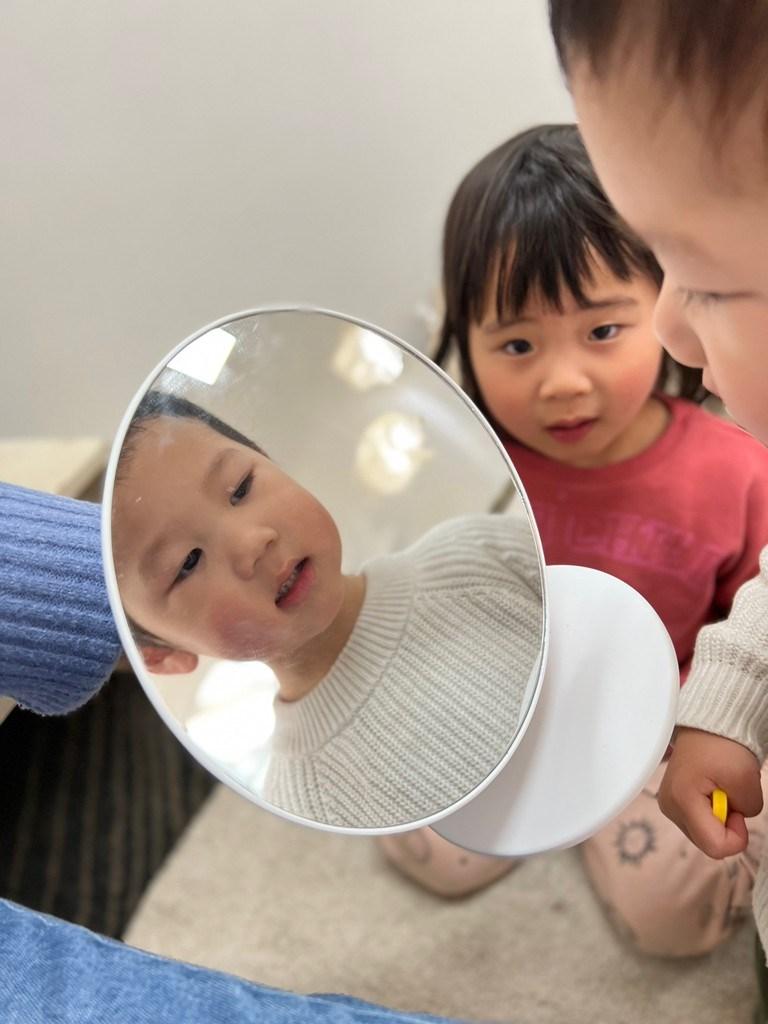
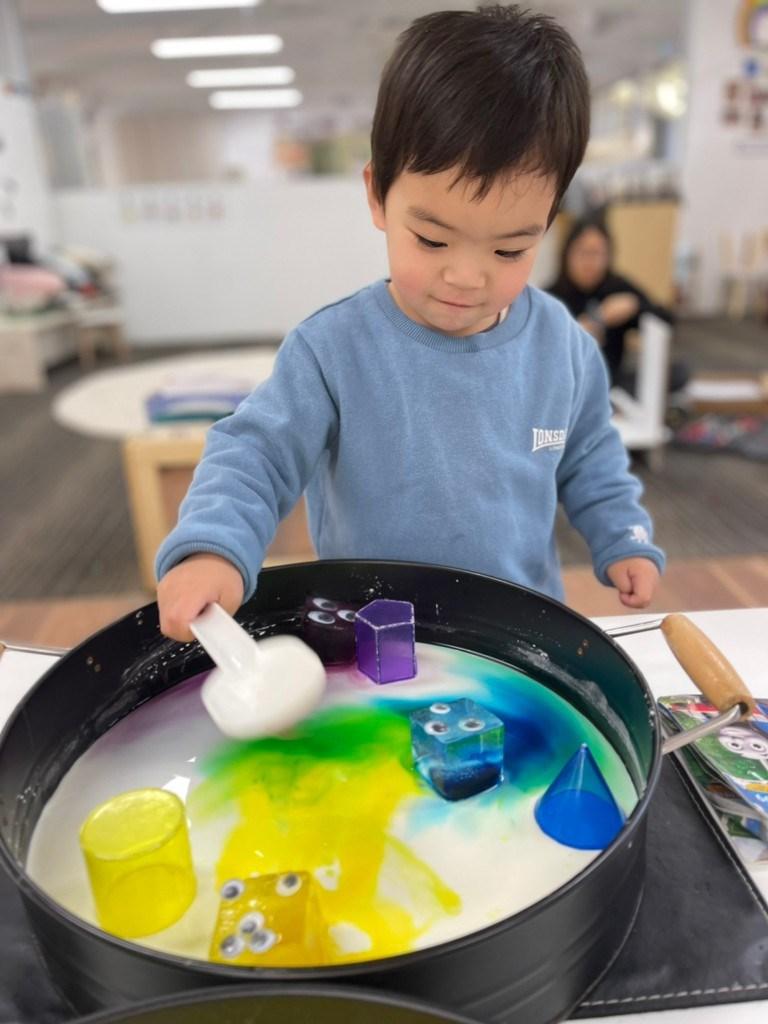


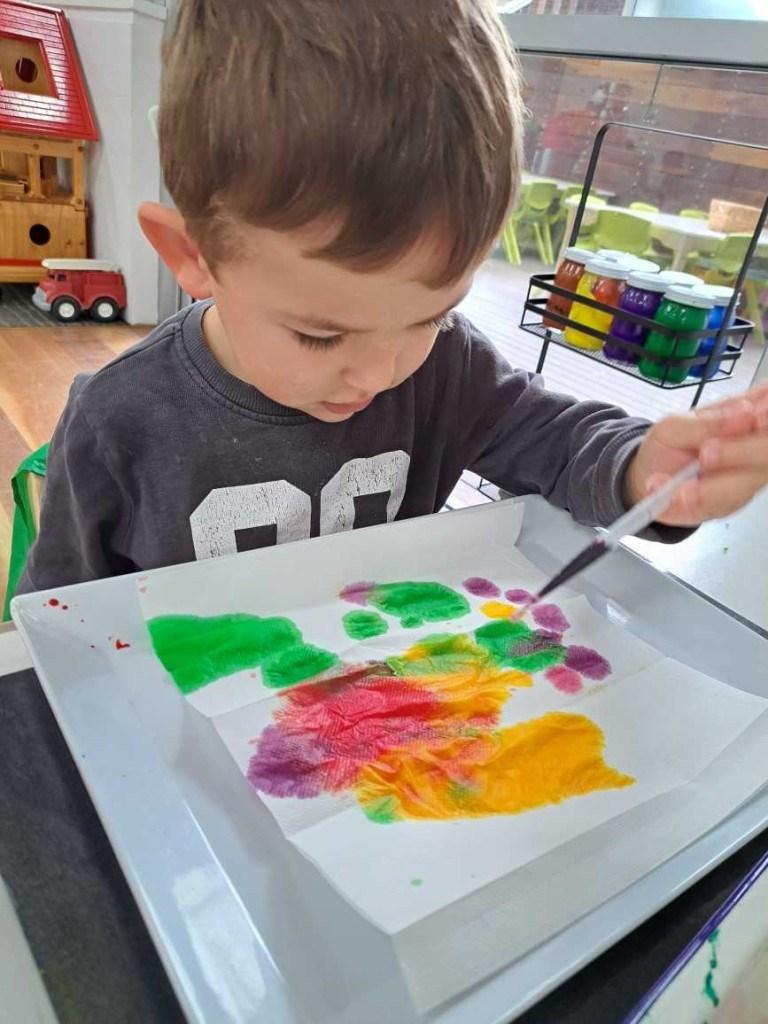



13 Stage 2E:
By Grace Nolan
Welcome to Term 4 where we will be exploring everything Animalia. To start off this provocation we observed the children’s interest in animals during our ‘Auslan Animal’ group times, as well as the children’s dramatic play role playing as dinosaurs. From here, the teachers sought out to find how much the children already knew about dinosaurs and what questions they might have.
During our morning meeting we posed the question “What do you know about dinosaurs?”
Avery: “Dinosaurs eat fruit”
Harry May: “They eat grass and trees”
Michael: “My mummy dropped her glasses and the dinosaur wanted to eat her glasses”
Dylan: “T Rex”
Sarah: “Triceratops has three horns… and Pteranodon”
The room was set up with a variety of dinosaur based experiences. Our long table we had dinosaur sorting and matching, dinosaur counting and a small world dinosaur excavation with paintbrushes. On the sensory table we used slime and loose parts to mimic a small volcano world, on other days we used play dough with dinosaurs to stamp to demonstrate the beginning concepts of fossils!
Our small groups this week included engaging in numeracy concepts such as informal measuring. Firstly, the children looked at a dinosaur book and each picked a Dinosaur to measure using the small blocks. Miss Grace modelled how to start from the tail to measure lengthways, some children were able to measure the height of their Dinosaur as well! The children then counted the blocks to see how long or tall their dino was.
Another group went outside to practise drawing, identifying shapes, extending their fine motor skills and engaging in discussions surrounding dinosaurs. Using the large dinosaurs, chalk and brown paper, the children were encouraged to trace the dinosaur's shadow. This experience allowed Miss Carina and Miss Anne to model and discuss how to use varying shapes to create a complete picture.
On a walk around the campus, the children were able to bask in the natural grounds of the school different trees and plants. The children were engaged in meaningful discussions about which plants dinosaurs would eat if they were herbivores. Harry asked the question "Do dinosaurs eat grass?".
Using these questions and what the children know already, we plan to use a childs’ webbing to explore further avenues of our inquiry next week and beyond.

Next week we continue to explore where the different dinosaurs lived and what made them become extinct.
Grace, Carina and Callum
Stage 3R
15
“Dinosaurs put our place in the world into perspective,” Matt Bonnan









17 Stage 3R:
By Laura Ashcroft
“The more that you read, the more things you will know. The more that you learn, the more places you will go” Dr. Seuss
Welcome to Term 4! 3E have recently started their journey of exploring literacy through play where they have been able to explore different letters and their corresponding sounds found in their names, objects within the room and other important aspects relating to their learning environments. During Week 1, the children were invited to practise writing their names using different drawing utensils and materials, practise signing into the room by writing their name, using sign language to sing the alphabet, and actively use their imagination to create their own story with matching pictures! This allowed the children to engage in meaningful group discussions and small group activities where they could read high corner, engage with play and begin to establish further connections between people, places, and things.
Some of the learning opportunities the children have enjoyed the most include:

• The new ‘sign in table’ where they are enthusiastically writing their name upon arrival.
• Alphabet bingo games where they are able to match sounds to objects and vice versa.
• Determine which letter is missing from an object and find the corresponding letter.
• Contributing to creating and designing a picture book for their new book corner!
Warm regards, Laura, Natalie, Kai and Margaret
Stage 3E







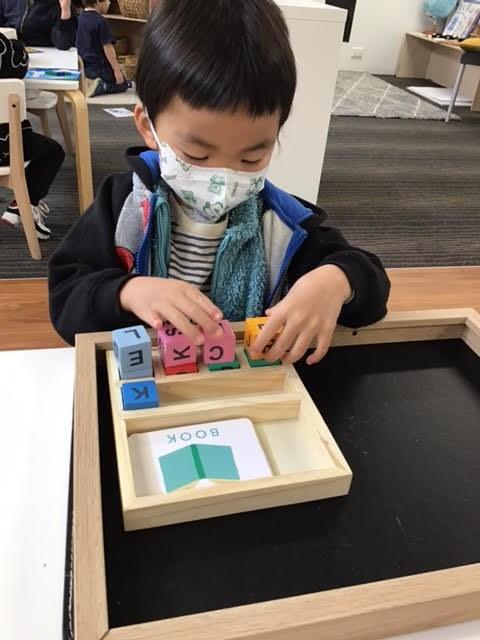

19 Stage 3E:
By Rebecca Kim
Over the last two weeks our focus has been 'Big School', as many of our children prepare for kindergarten next year. At the drawing table, the children were provided with images of teachers and classrooms as inspiration for their drawings. We also engaged in dramatic play with computers and keyboards and pretended to be teachers 'doing work inthe office'. Our writing centre has been set up with whiteboards and notebooks this week like they use at big school.
Throughout the week we read ‘First Day’ by Andrew Daddo, ‘Wombat Goes to School’ by Jackie French,‘The Things I Love About School’ by Trace Moroney, ‘School for Dads’ by Adam Guillain and ‘I am too Absolutely Small for School’ by Lauren Child. Throughout the week, as we read our stories, we added to a mind map of things we know about big school. Many of the children visited their big schools this week fortheir orientations and shared their excitement with us. Lunchboxes, wearing uniforms, art class and how we get to school were common themes that the children brought up, so we will further explore these next week.
.We discussed that at big school we will need to take lunch boxes. The children were given a variety of different foods and we sorted them into 'nutritious foods' and 'sometimes foods'. We also discussed the different modes of transport we use to get to school. We began by reading 'We All Go Travelling By' by Sheena Roberts and noticed what vehicles the children used to get to school. We then discussed how we all got to school today and recorded our results on a graph. This week we also read, 'The Day the Crayons Quit' by Drew Daywalt, and discussed how important it is to use our crayons responsibly, so they don't 'quit'. At the playdough table, the children were provided with letter & number cookie cutters, peg people and pencils, to explore and make sense of big school concepts.
The children have been extending their abilities to write letters and were provided with two unique ways to make letters, building them using the nuts and bolts construction set and drawing them in the sand trays. To extend on the children’s interest in lunchboxes from our stories last week, in home corner this week we have lunchboxes and a variety of foods.
Many of the children engaged in dramatic play in this space, packing lunchboxes and playing 'schools' and 'teachers'. On the atelier this week, the children painted tartan patterns, to extend on our discussions of 'school uniforms'. They first added their base colours, inspired by the colours of their big school uniforms, then they used rulers to create the interlocking lines of their patterns, and then painted the squares to create a checkerboard pattern.

21
Stage 4R









22 Stage 4R:
Lauren
Welcome to Term 4 and our provocation Becoming Confident Me! where the children will be exploring their emotions and prepare themselves for the transition to kindergarten. We will be reading many social and emotional story books that will invite the children to share similar experiences, and together we will discuss how we can navigate a variety of feelings and social situations. The children’s brains develop rapidly in the first five years, however at 4 and 5 years old, they are still learning how to manage their emotions and need support to self regulate. This next stage of the children’s lives can be both overwhelming and exciting. It’s important that they feel supported, heard, and are provided with the tools they need before they leave Reddam as happy, confident and capable learners.
Our story of the week, The Colour Monster by Anna Llenas, encouraged the children to start sharing their emotions. With the help of his friend, the Colour Monster categorised his emotions into separate jars to better understand what each of them meant. Yellow represented happiness and sunshine while sadness felt like a blue and rainy day. Anger was bright red and volcanic, and fear felt like walking through a pitch black forest. A sense of calm was illustrated with green plants, and love was made up of shades of pink. Throughout the week, it was wonderful to see the children being more vocal about their emotions, and start to use more descriptive words to accurately communicate their feelings to one another.
This term we are also engaging with various fairy tales to foster the children’s interest in storytelling. The class will learn to analyse different characters, themes and stereotypes, and think about the moral of each story. We started with The Three Little Pigs, where we discussed how the Big Bad Wolf “allegedly” scared the pigs in their homes before blowing them down. The children shared their thoughts about how the wolf deserved his comeuppance at the end of the story because he didn’t have good intentions. However, some of the children wondered if he was actually friendly and just misunderstood? The children then took turns to assume the characters and retold the story through the art of performance. What fine actors we have!
Next week, the children will continue on their social and emotional journey, and explore what it means to be ‘happy’. We will also analyse the story of Jack and the Beanstalk, and continue with our bean germination project from our Vacation Care Program.
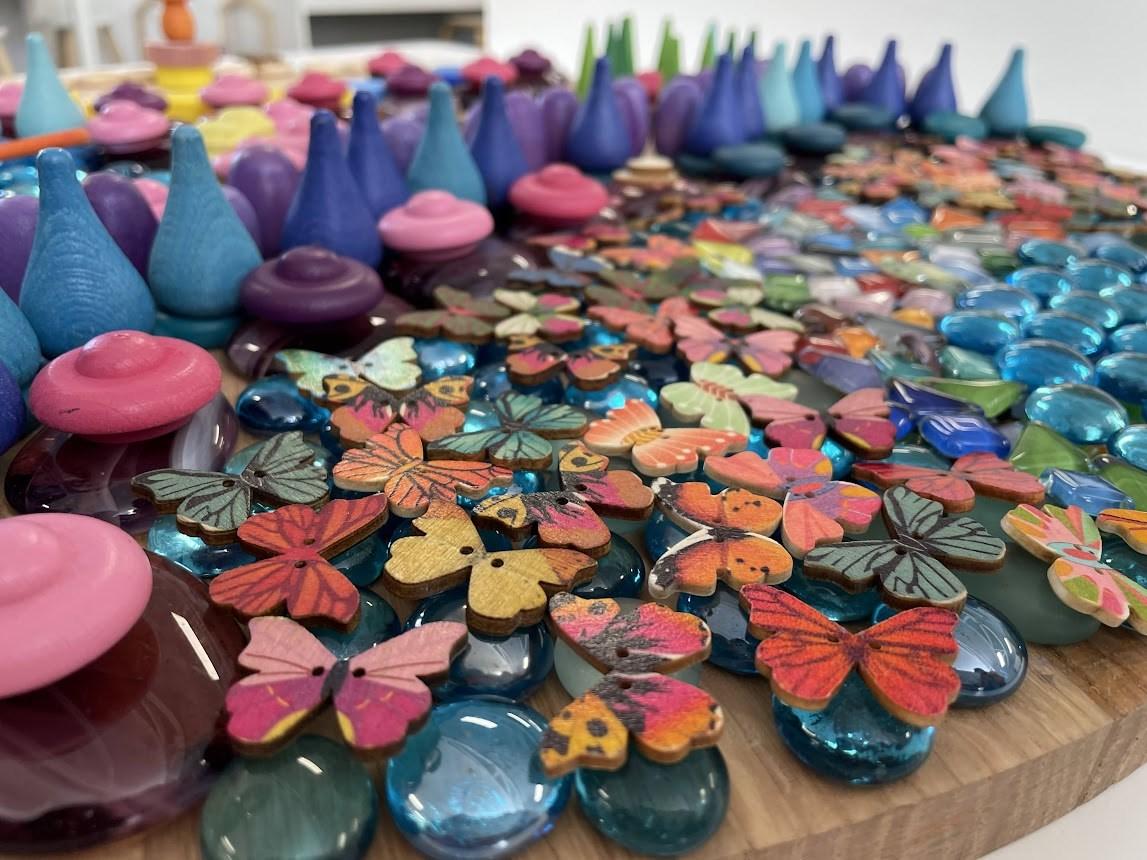
Thank you for a wonderful start to the term!
Lauren, Priya and Jenny
24
“When we can talk about our feelings, they become less overwhelming, less upsetting and less scary.” (Fred Rogers)
Stage 4E By
Hall


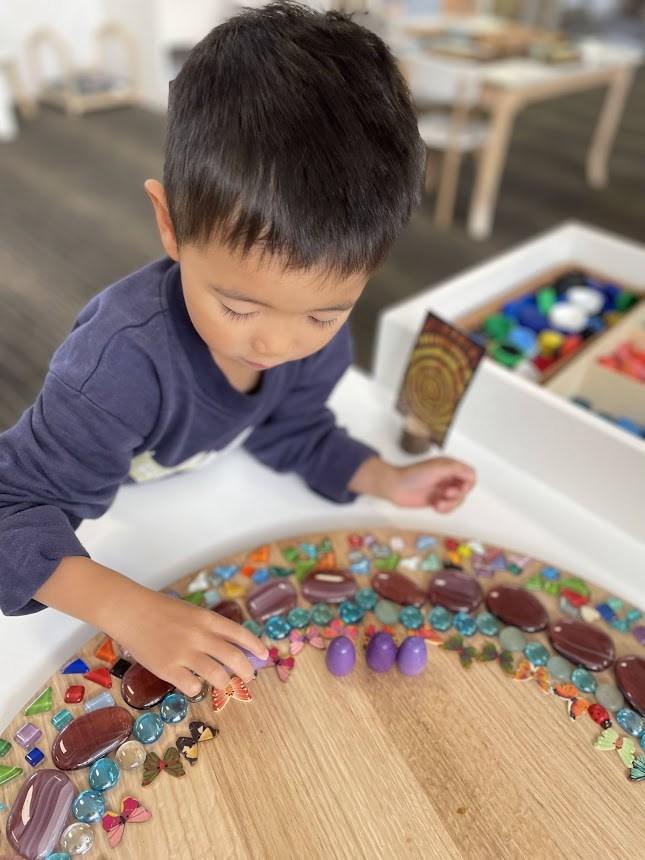






Stage 4E: 25

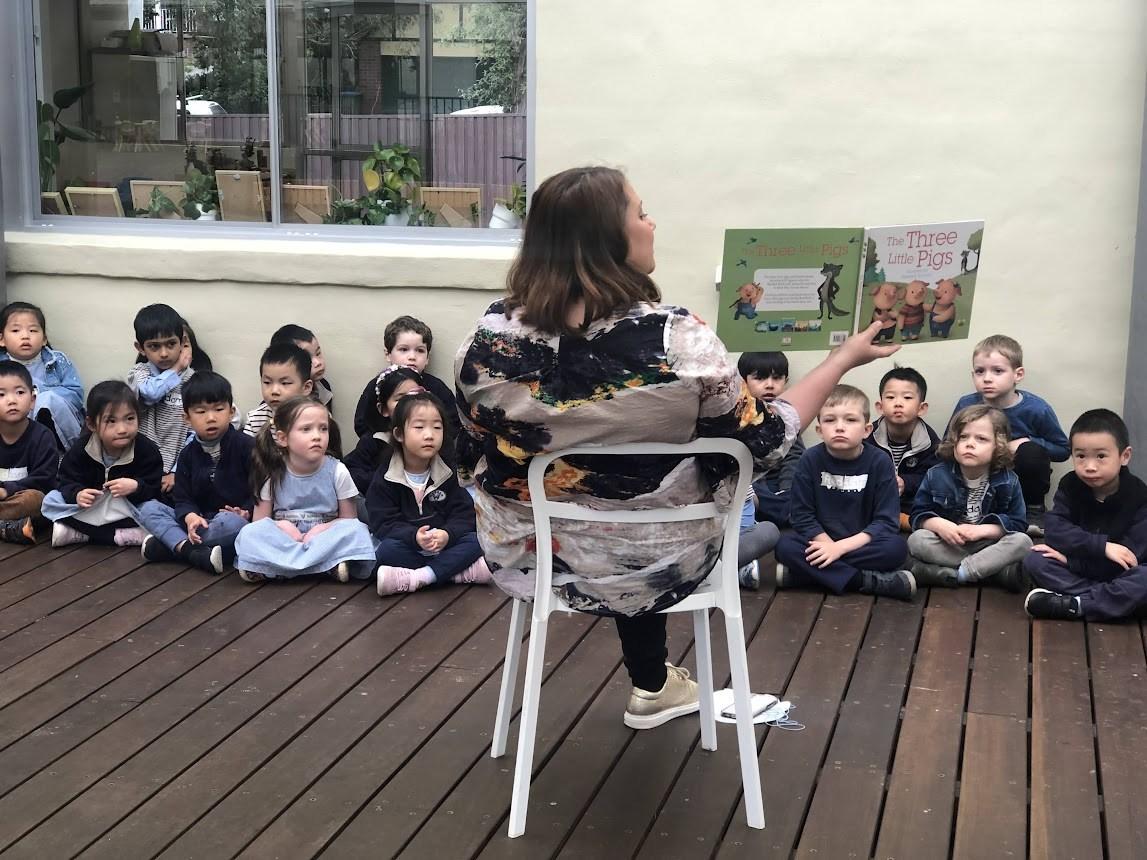






Stage 4E: 26






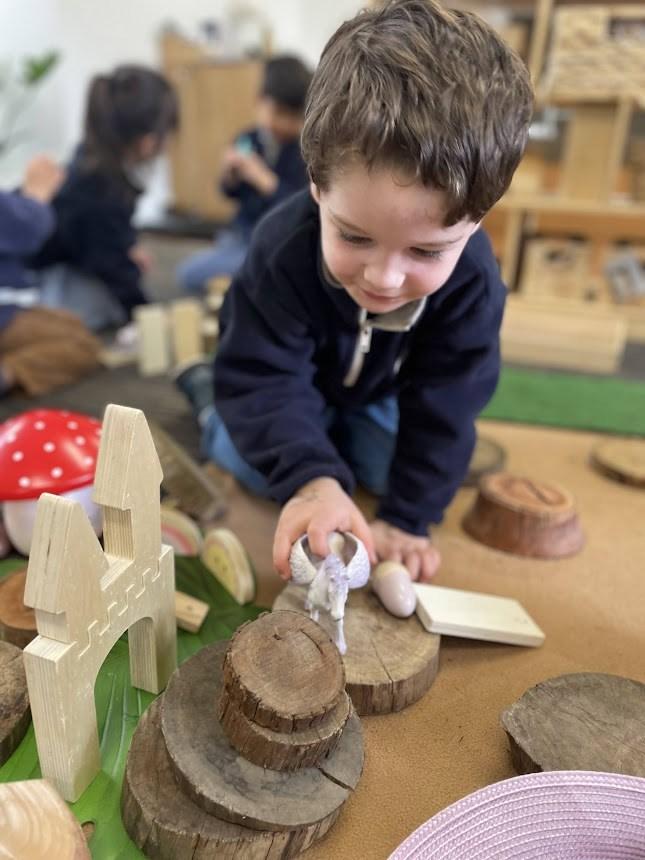

Stage 4E: 26




































































































